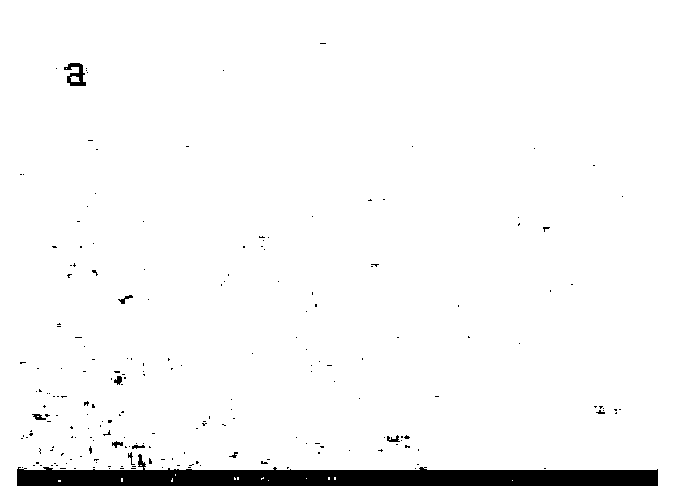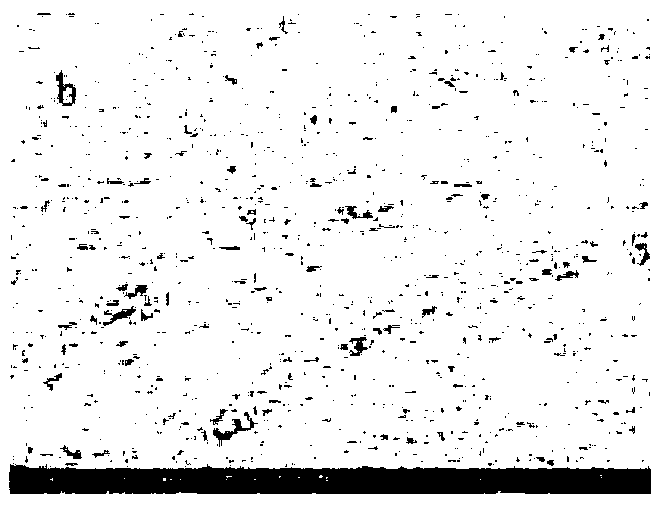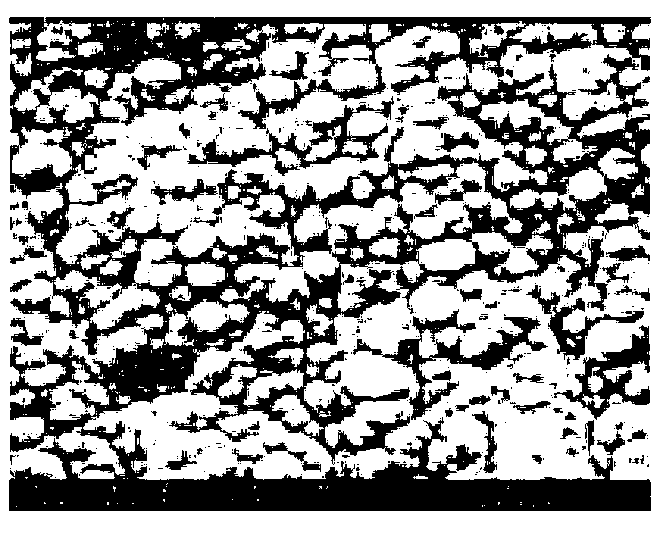Preparation method of nanocrystal iron-nickel-chromium alloy foil by electrodeposition
A nanocrystalline and chromium alloy technology, applied in the field of electrochemical deposition, can solve the problems of increased internal stress of alloy foil, easy cracking of alloy foil, etc. consumption effect
- Summary
- Abstract
- Description
- Claims
- Application Information
AI Technical Summary
Problems solved by technology
Method used
Image
Examples
Embodiment 1
[0040] Using titanium as cathode, sintered metal oxide RuO 2 The titanium plate is a catalytic anode, and the thickness of 20~30μm is produced by electro-deposition using the DC electrodeposition process conditions shown in Table 1 for 45 minutes, and the composition is Fe 63.12 Ni 31.41 Cr 5.46 Nanocrystalline alloy foil. After testing, the grain size is in the nanometer range, the microhardness of the coating is 573HV, the resistivity is 50-60μΩ·cm, and the corrosion current density in 5%NaCl solution is only 2.26×10 -6 A·cm -2 Excellent corrosion resistance.
[0041] Table 1 Process conditions for preparing nanocrystalline Fe-Ni-Cr alloy foil by DC
[0042]
Embodiment 2
[0044] Using titanium as cathode, sintered metal oxide InO 2 The titanium plate is a catalytic anode, and the thickness of 20~30μm is produced by electro-deposition using the DC electrodeposition process conditions shown in Table 1 for 45 minutes, and the composition is Fe 62.09 Ni 36.48 Cr 1.42 Nanocrystalline alloy foil. The corrosion current density in 5% NaCl solution is 1.45×10 -5 A·cm -2 .
[0045] Table 2 Process conditions for preparing nanocrystalline Fe-Ni-Cr alloy foil by DC
[0046]
Embodiment 3
[0048] Using titanium as cathode, sintered metal oxide InO 2 The titanium plate is a catalytic anode, and the thickness of 20~30μm is produced by the DC electrodeposition process conditions shown in Table 3 for 45min. The composition is Fe 72.5 Ni 20.13 Cr 7.37 Nanocrystalline alloy foil. The corrosion current density in 5% NaCl solution is 1.65×10 -6 A·cm -2 .
[0049] Table 3 Process conditions for preparing nanocrystalline iron-nickel-chromium alloy foil by DC
[0050]
PUM
| Property | Measurement | Unit |
|---|---|---|
| microhardness | aaaaa | aaaaa |
| electrical resistivity | aaaaa | aaaaa |
| microhardness | aaaaa | aaaaa |
Abstract
Description
Claims
Application Information
 Login to View More
Login to View More - R&D
- Intellectual Property
- Life Sciences
- Materials
- Tech Scout
- Unparalleled Data Quality
- Higher Quality Content
- 60% Fewer Hallucinations
Browse by: Latest US Patents, China's latest patents, Technical Efficacy Thesaurus, Application Domain, Technology Topic, Popular Technical Reports.
© 2025 PatSnap. All rights reserved.Legal|Privacy policy|Modern Slavery Act Transparency Statement|Sitemap|About US| Contact US: help@patsnap.com



